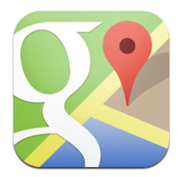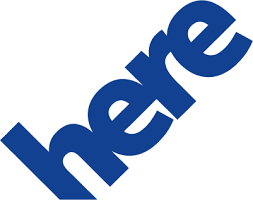 Interesting press release out of TomTom today: The Dutch PND and map maker announced that they have “extended (their) location-based services product portfolio with an online turn-by-turn navigation service”. That means that they are adding server-based navigation; a feature that is offered by competitors like Nokia HERE and Google but, until now, not by TomTom. The release also says “In support of this product line extension TomTom has expanded its relationship with deCarta.”
Interesting press release out of TomTom today: The Dutch PND and map maker announced that they have “extended (their) location-based services product portfolio with an online turn-by-turn navigation service”. That means that they are adding server-based navigation; a feature that is offered by competitors like Nokia HERE and Google but, until now, not by TomTom. The release also says “In support of this product line extension TomTom has expanded its relationship with deCarta.”
Hmm…that’s a little cryptic.
Here’s what that means: TomTom has been a supplier of Personal Navigation Devices (aka: PNDs, GPS, SatNav) for years. They also have a map dataset (from their 2007 acquisition of TeleAtlas) that they license to many customers, notably Apple. They have build connected services for traffic data. What they haven’t had is off-board (or on-line as they call it) navigation, server-based navigation that is the standard for Google, Apple and arch-rival Nokia HERE. That’s something they need to compete in connected cars, in mobile and in the coming Internet of Things market. Now they are dealing with that gap…and they are using deCarta’s platform to do it.
It’s a needed and overdue step for TomTom. It’s also a big win for deCarta.
Disclaimer: I am a past employee of deCarta, from about 5 years ago.
What’s new?
deCarta and TomTom have been “partners” for a long time, in the sense that deCarta has used TomTom data with its LBS platform to offer these types of solutions to their own customers. What’s new in this announcement is that TomTom will now be selling these services under their brand as a mapping service. The release positions the agreement in the context of navigation services but if its built on deCarta’s platform, they would also have access to other components like local search and geocoding. Potentially, that gives TomTom the ability to sell online mapping services directly in competition with Nokia HERE, going after large mobile and Internet players who don’t want to (or can’t) use Google’s maps. That’s new for them.
Why do we care?
The map data licensing side of TomTom (acquired as TeleAtlas in 2007) has been at a disadvantage to HERE because it could only offer the map data; not the services that turn those maps into valuable application assets for most developers. In 2007, the location market was primarily about commercial data providers selling through third-party LBS platform providers to commercial application developers. That’s changed: commercial map data owners have moved to offering that data through API based LBS platforms, making the data easier to use for developers.
Look at the competition.
 In 2004, Google Maps started as an application layer (on deCarta’s platform and TeleAtlas’ data, in fact), but quickly moved to integrate vertically, first building its own platform and eventually its own map database. Google did not integrate to save money; they did it to own the stack and get the resulting flexibility, consumer data, map corrections and scalability that they could not have gotten working through partners.
In 2004, Google Maps started as an application layer (on deCarta’s platform and TeleAtlas’ data, in fact), but quickly moved to integrate vertically, first building its own platform and eventually its own map database. Google did not integrate to save money; they did it to own the stack and get the resulting flexibility, consumer data, map corrections and scalability that they could not have gotten working through partners.
Nokia HERE took longer but eventually made the same decision, transforming itself from  primarily a map data company to a map platform company, merging their Ovi platform with NAVTEQ maps and offering LBS services to many large internet platforms such as Yahoo!, Amazon, Samsung and others. More recently, they have emphasized a Connected Car platform to offer service to the Auto OEMs. That move impacts more than just technology: it disrupts your eco-system, turning past partners into possible competitors. At the time, I spoke with Michael Halbherr (until recently HERE’s GM) and got the feeling that while it was hard, there was no choice…not if HERE wanted to stay relevant, offering up-to-date services that could compete with Google. Halbherr’s recent departure casts some doubt on their strategy but not on their commitment to an online platform model.
primarily a map data company to a map platform company, merging their Ovi platform with NAVTEQ maps and offering LBS services to many large internet platforms such as Yahoo!, Amazon, Samsung and others. More recently, they have emphasized a Connected Car platform to offer service to the Auto OEMs. That move impacts more than just technology: it disrupts your eco-system, turning past partners into possible competitors. At the time, I spoke with Michael Halbherr (until recently HERE’s GM) and got the feeling that while it was hard, there was no choice…not if HERE wanted to stay relevant, offering up-to-date services that could compete with Google. Halbherr’s recent departure casts some doubt on their strategy but not on their commitment to an online platform model.
Which left TomTom with a business model that was out of step with its competitors. TomTom has talked about a location platform but hasn’t had anything that made much of an impact in the market.
This deal gets them there. By partnering with deCarta, TomTom can now offer a cloud-based solution, at scale, internationally for its customers. deCarta’s experience in navigation is a good fit for TomTom’s base and the local search capability will help in the commercial and mobile markets. The press release makes no mention of automotive customers but if this solution doesn’t go in that direction, they will need another just like it to compete with Google, Apple and HERE.
Good thing?
So this is a good thing, but I wonder if it will be good enough. Part of the reason to build the complete link between geodata and the consumer is to deliver maps, search results and geo-information to that consumer. But increasingly, the other reason is to get information back from the user…about map errors, about traffic, about search patterns and about personalized context about those users that helps to improve the service. Competitors are moving fast to mapping solutions that can adapt to a changing world and to different users and contexts. Unless this partnership includes a way to collect and use that data return path, it will continue to be at a disadvantage, certainly to HERE and Google.
Thoughts?
